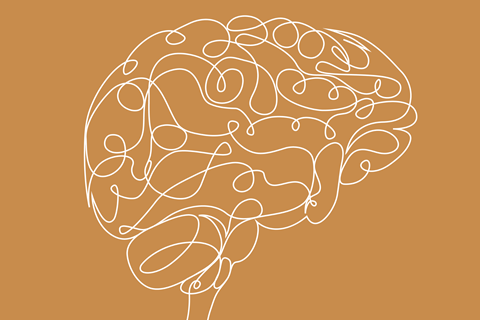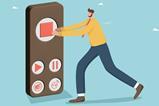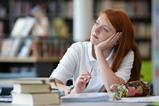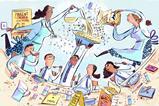You just need five minutes to get to grips with these impactful psychology findings to improve your teaching

Most teachers have heard about cognitive science. Research findings from the field are becoming more known, especially since a number of them have influenced Ofsted’s new Education inspection framework. However, most of us lack cognitive science training and have a patchy understanding of some of its central tenets.
Cognitive science is an interdisciplinary field considered part of psychology. It sits between neuroscience and behavioural psychology. Cognitive scientists are less interested in the physical structure of the brain than neuroscientists. Instead, they build conceptual models to explain thinking, learning and remembering. Researchers in this field move beyond the stimulus-response patterns observed by behavioural psychologists and look into what those patterns, or behaviours, can tell us about how things have been learned. Test performance is a behaviour that cognitive scientists might study, for example.
These are some of cognitive science’s most useful findings.
1. To become expert you must think differently
One key finding is the difference between the ways novices and experts think. In one classic experiment, undergraduate physicists were given a series of physics problems and asked to categorise them. The students grouped the problems based on surface details — some were grouped as problems about inclined planes, and others as about pulleys and so on. When postdoctoral physicists were given the same task, they categorised based on deep details. They saw that some problems were about thermodynamics, others about classical mechanics etc.
One key finding is the difference between the ways novices and experts think. In one classic experiment reported in Cognitive Science (bit.ly/2mfhzBl), undergraduate physicists were given a series of physics problems and asked to categorise them. The students grouped the problems based on surface details — some were grouped as problems about inclined planes, and others as about pulleys and so on. When postdoctoral physicists were given the same task, they categorised based on deep details. They saw that some problems were about thermodynamics, others about classical mechanics etc.
Cognitive science researchers posit that there are two types of people within a particular domain: novices and experts. They don’t just differ quantitatively – in the relative amounts they know – but qualitatively. Novices and experts think in fundamentally different ways. Teachers are subject experts, and as a general rule students at school are novices.
2. Thinking like a scientist is not a transferable skill
After teaching bonding, a teacher might test students by asking them to apply their new knowledge. They might, for example, ask why silicon dioxide is used as a welding blanket. Then, the teacher will despair at the poor quality responses. Cognitive scientists point out that this is because students are novices. They struggle to see the question has any relevance to covalent bonding. They do not understand the question’s ‘deep structure’.
If novices are provided with more than four or five new pieces of information, it’s likely they will fail to learn anything
If those students had received lessons on ‘application skills’, or feedback for improving their ‘knowledge transfer skills’, it would not have helped. ‘Thinking like a scientist’ is not a generic transferable skill that we can instil in our students this way. It is the manifestation of highly subject-specific knowledge and the product of steady accumulation of knowledge and understanding over time. The journey from being a novice is a long one, and teachers should expose students to extensive practice to expedite the process.
3. Cognitive overload can be anticipated and tackled
In a nutshell, cognitive load theory (CLT) states that novice learners have limited abilities to process new information. If novices are provided with more than four or five new pieces of information, it’s likely they will fail to learn anything. Cognitive scientists have conducted many experiments to investigate the parameters of CLT. There is now an extensive literature detailing how it can be anticipated and worked around.
The experimental results have some implications that are not obvious at first. For example, we should expect discovery- or inquiry-based learning to be particularly difficult for novices, given the restraints on their capacity to think about material which is new to them. Indeed, many randomised, controlled experiments have pointed to discovery or inquiry approaches as significantly less effective methods for learning than clear, teacher-led instruction. And yet, inquiry and discovery approaches are advocated in public educational discourse, initial teacher training and educational research, and are often expected as part of any good science lesson.
4. Segment, sequence and conquer
One way to get around students’ limited ability to process new information is to segment and sequence. Segmenting means to break apart a concept into its constituent parts, and then to explain the parts one by one, allowing for practice and review between each one. So, before explaining fractional distillation, give your students plenty of practice at molecular behaviour and boiling points. Without this, you risk introducing too much material at once.
Evidence from cognitive science suggests the ‘retrieval practice’ strategy is effective, and simple to implement
Sequencing is making sure concepts fit together correctly, with no missing pieces. For example, teaching titration before teaching acids (as it is done in many schemes of work) would be faulty sequencing due to missing links in your explanation.
5. Practise recall to improve long-term memory
It’s easier to learn new material within a topic if you already know quite a lot about that topic. Therefore, it’s important to make sure students’ long-term memories are as robust and densely populated as possible. Unfortunately, we forget things over time and, perhaps worse, we tend to use study strategies that don’t improve our retention. Evidence from cognitive science suggests the ‘retrieval practice’ strategy is effective, and simple to implement. All you need to do is ask your students questions. Provided students are trying to actively retrieve a memory, they are strengthening the memory’s place in their minds. It sounds a little counterintuitive, but the evidence is clear: more testing means better memories.
There are lots of ways to implement retrieval practice in your classroom, and it’s best if you keep the stakes low and spread out topics over time. Make sure everything is revisited after a week, a month, two months and so on.
There are lots of ways to implement retrieval practice in your classroom, and it’s best if you keep the stakes low and spread out topics over time; these two articles from the 7 simple rules for science teaching series are a good starting point: rsc.li/2nF36Po and rsc.li/2n7uHIY. Make sure everything is revisited after a week, a month, two months and so on.
Further reading
There’s something ironic about writing an article packed with information that also advocates anticipating cognitive load. But it’s important that teachers are exposed to as many of these ideas as possible. Findings from cognitive science tend to be robust and triangulated with other sources evidence.
- Ofsted’s explanation of how they use CLT
- Recommendations for study strategies that work, and those that don’t, according to a psychology expert.
- #CogSciSci have published a lot of resources and support.
Further reading
There’s something ironic about writing an article packed with information that also advocates anticipating cognitive load. But it’s important that teachers are exposed to as many of these ideas as possible. Findings from cognitive science tend to be robust and triangulated with other sources evidence. These three are good places to start:
- Ofsted’s explanation of how they use CLT: bit.ly/2m379EZ
- Recommendations for study strategies that work, and those that don’t, according to a psychology expert: bit.ly/2meWYNq
- #CogSciSci have published a lot of resources and support: bit.ly/2ncqsvs














No comments yet